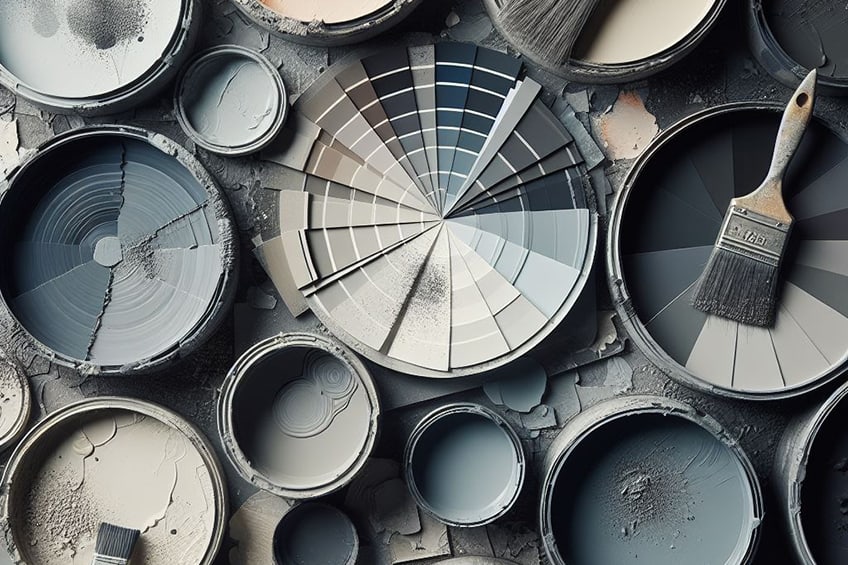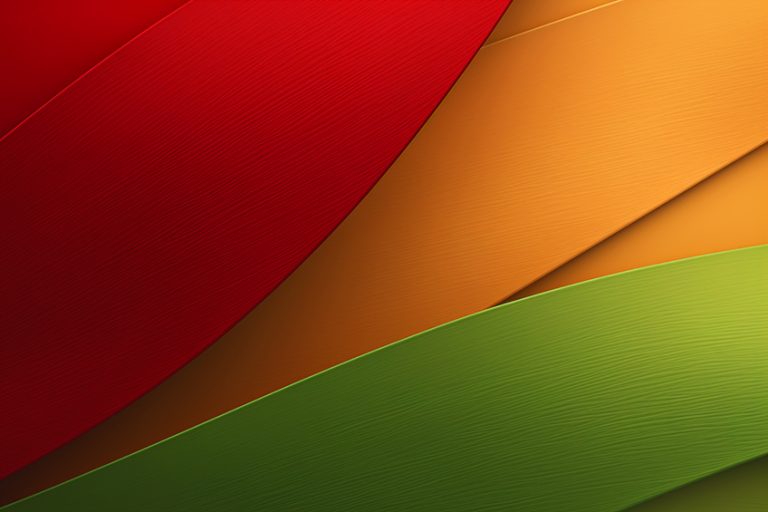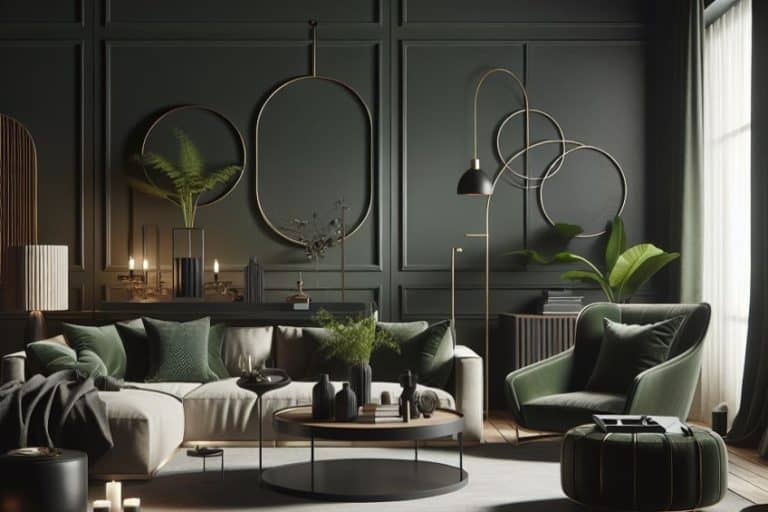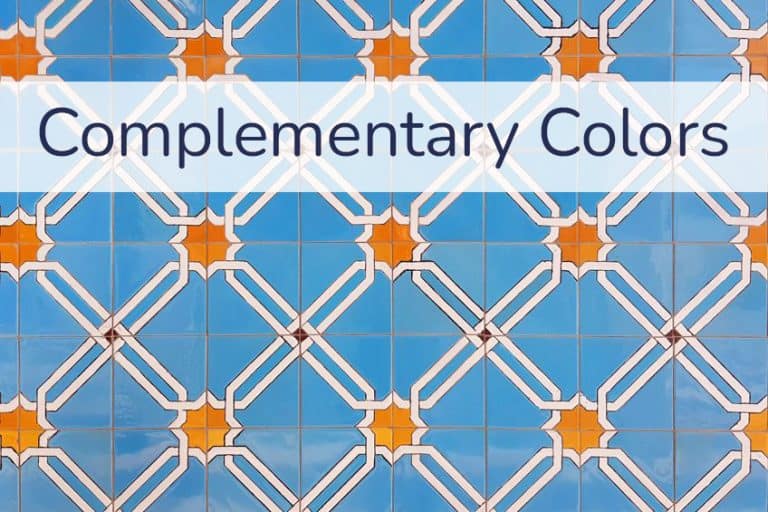What Colors Make Gray? – 3 Easy Methods and 25 Gray Shades
Although often overlooked by many, gray is an essential part of any color pallet. This soothing neutral shade offers a reassuring middle ground between light and dark, bringing out the best in the colors that surround it. As artists, we cannot simply settle for gray out of a tube when we have the world of color mixing at our fingertips. In this color mixing guide, we will show you how to create new and interesting gray hues from a range of colors, and give you a deeper insight into the many wonders of the color gray.
What Colors Make Gray?
There are three main methods that you can use to create different gray shades:
Method One: Black and White Combination
- Black paint
- White paint
Method Two: Mix two Complementary Colors
- Warm Gray: Mauve purple and flax yellow (or darker shades like mulberry purple and gold yellow)
- Cool Gray: Cadmium orange with phthalo blue, cobalt blue, or ultramarine blue; or phthalo green with cadmium red or naphthol crimson
Method Three: Primary Colors Mix
- Alizarin crimson (red)
- Ultramarine blue
- Yellow ochre
We will discuss each of these methods, provide our favorite color combinations, and explore how to adjust the temperature and tone of your gray shades. First, however, we need to cover some of the basic principles of color theory.
Method One: How to Make Gray With Black and White
This first method is probably the easiest and most common way to create a shade of gray. If you want to know what two colors make gray, the answer is black and white. You simply need to combine equal parts of black and white paint, to create a lovely neutral shade of gray.

The 1:1 ratio of black and white is only the beginning of this method. You can alter the darkness of your gray by adding more or less black to your white paint.
If you are uncertain of how dark you want your gray paint to be, it is best to begin with your white paint and add small drops of black incrementally. As they always say, it is much easier to add more black than to take it away. Black is the stronger of the two colors, and you only need a touch of black to darken your gray significantly, but a lot of white to lighten it by a small amount.
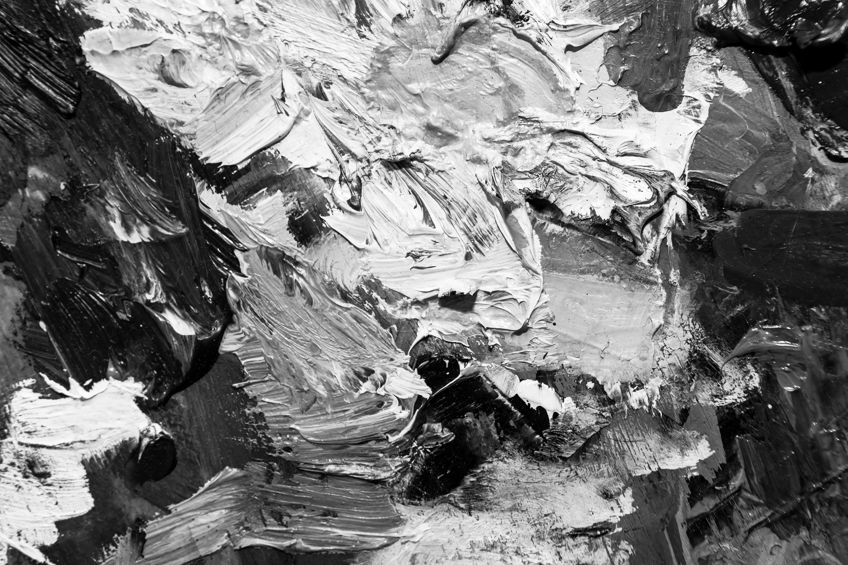
Downsides to Using This Method
The gray you get from this method is very neutral, as it is neither cool nor warm. This may be ideal for some purposes, but overall this is not the most-loved method for making gray shades. Many artists prefer to use the other methods to create richer grays with different color biases, rather than using this rather flat and lifeless gray.
Another downside of using this method is that you are typically limited to the black or white you have in your palette, again reducing the variety of gray shades that you can make. Finally, many shop-bought black shades have base colors like green which can begin to show through when mixed with white. As a result, you have little control over the final gray shade when using this method.
Method Two: How to Make Gray Paint With Complementary Colors
Combining complementing colors is one of the most popular methods for creating muted colors. When it comes to the question of what two colors make gray paints that have unique color biases and underlying hues, your best option is to use combinations of complementary colors.
Depending on the complementary colors you use, you can control the warmth of your gray shades with ease.
When it comes to mixing the perfect gray shade for your unique painting project, nothing beats experimentation. We have two different methods for you, one for creating a warm gray and one for a cool gray, but you can explore different combinations and ratios to find your perfect shade.
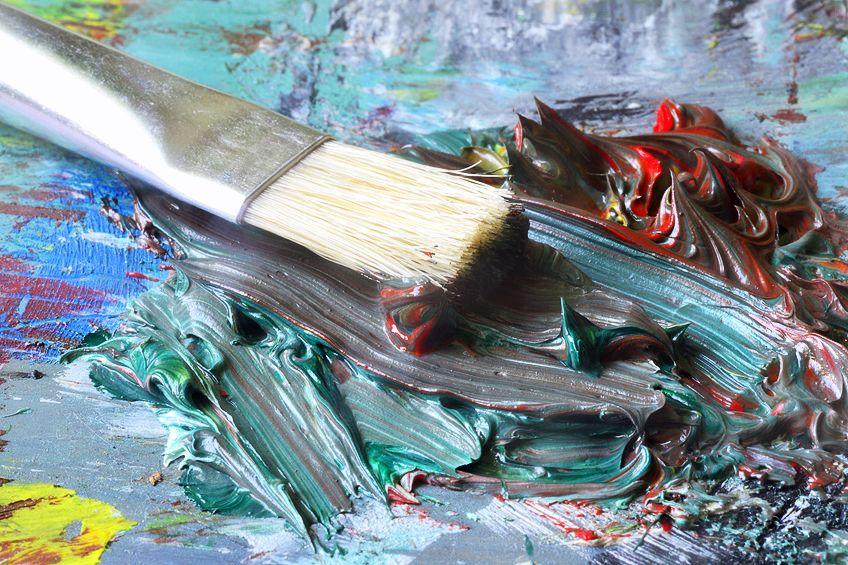
What Colors Make Gray Warm?
The trick to making a warm gray is to use two warm colors. We find that we can create a lovely warm mauve gray by using purple and yellow. Of course, if you were to use a cool purple and yellow shade, you can make a cooler gray shade, but we are using a warm yellow and purple. The two shades that we suggest are:
- Mauve purple
- Flax yellow
Both of these colors are already slightly muted and lean towards gray to begin with, which makes them ideal for creating a light and warm mauve gray. Simply combine these two shades in equal parts and marvel at your beautiful shade of gray. You can use this gray for puffs of smoke, storm clouds, or pebbles. The possibilities are endless with this stunning warm gray. This gray is quite light, and you can make a dark grayish purple shade by using darker shades of purple and yellow. For example, you can substitute your complementing shades with these darker hues:
- Mulberry purple
- Gold yellow
What Colors Make Gray Cool?
In contrast to making warm grays, there are a few more color combinations that you can use to make cool gray shades. The first combination we are going to discuss is orange and blue. You can experiment with using different shades of blue, but the best orange to use when making gray is cadmium orange. The best blue shades for making a cool blue with cadmium orange are:
- Phthalo blue
- Cobalt blue
- Ultramarine blue
Once again, combine your orange and blue in equal parts to produce a lovely cool and quite dark gray shade. Ultramarine blue is a little warmer than the other two, so the gray you will get from it and cadmium orange will be slightly more muted. If you want your gray to be even darker, use a darker shade of blue. If you want to lighten your gray, you can add a touch of white.
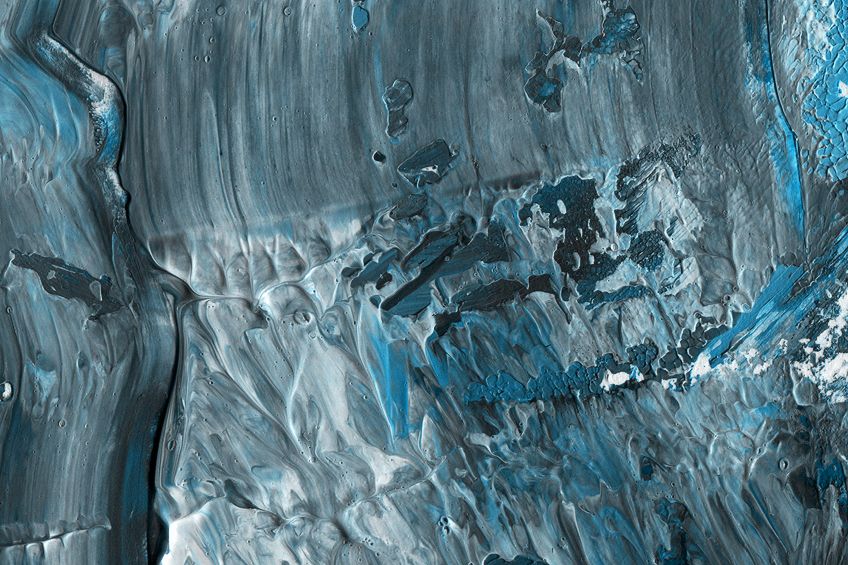
The second color combination that will create a cool gray shade is red and green. The best green for making gray is phthalo green, and you can combine this shade with a few different red hues for different results. Our favorite red hues for making a cool gray shade are:
- Cadmium red
- Naphthol crimson
This gray is quite a dark shade, so once again, you can lighten it a little by adding a touch of white paint.
Method Three: How to Make Gray With the Primary Colors
The final, and perhaps most popular method for how to make gray paint is to use a combination of all three primary shades. This method includes a lot of room for adapting and changing your gray shade significantly throughout. We find that the best colors to use with this method are:
- Alizarin crimson
- Ultramarine blue
- Yellow ochre
Begin this mixing process by combining equal parts of your red and blue paint to create a purple shade. At this stage, you can decide whether you want your gray to be warmer or cooler. If you want it to be warmer, add a touch more red, and if you want it to be cooler, add a little more blue.
The crucial part of this method is adding your yellow. It is the addition of the yellow that turns your purple into gray.
Essentially, this method is a slightly longer route to get to the same point as using purple and yellow, but you have a lot more control over the final shade because you are starting from the absolute baseline. You can create the perfect tone of gray by adjusting how much yellow you add. For a darker gray, you simply need to add less yellow, and more for a lighter gray shade.
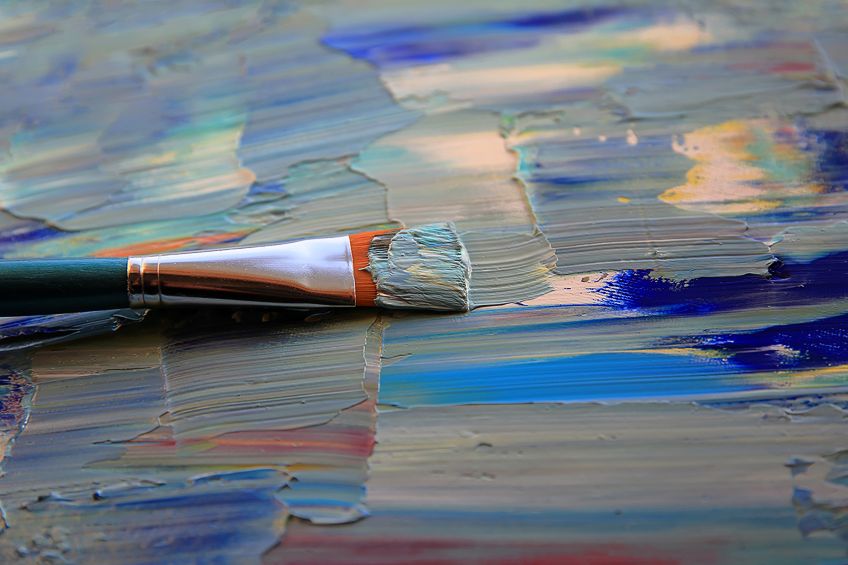
Recipe for How to Mix 25 Different Shades of Gray
| Color Name | Hex Code | Mixing Recipe (in parts) |
|---|---|---|
| Platinum Gray | #E5E4E2 | 9 parts white, 1 part black, <1 part blue |
| Ash Gray | #B2BEB5 | 8 parts white, 1 part black, <1 part green |
| Gunmetal Gray | #2C3539 | 7 parts black, 3 parts white, <1 part blue |
| Dim Gray | #696969 | 1 part black, 1 part white |
| Slate Gray | #708090 | 6 parts white, 4 parts black, <1 part blue |
| Smoke Gray | #BEBEBE | 11 parts white, 1 part black |
| Shadow Gray | #8B8589 | 6 parts white, 4 parts black, <1 part purple |
| Pearl Gray | #CECECE | 14 parts white, 1 part black |
| Thunder Gray | #A9A9A9 | 8 parts white, 1 part black, <1 part blue |
| Steel Gray | #43464B | 6 parts black, 4 parts white, <1 part blue |
| Charcoal Gray | #36454F | 3 parts black, 1 part white |
| Oyster Gray | #D4D4DC | 15 parts white, 1 part black, <1 part blue |
| Taupe Gray | #8B8589 | 5 parts white, 5 parts black, <1 part brown |
| Fog Gray | #D3D3D3 | 16 parts white, 1 part black |
| Stone Gray | #928E85 | 7 parts white, 3 parts black, <1 part brown |
| Iron Gray | #43464B | 5 parts black, 5 parts white, <1 part blue |
| Davy’s Gray | #555555 | 1 part black, 1 part white |
| Granite Gray | #676767 | 2 parts black, 3 parts white |
| Pewter Gray | #96A8A1 | 6 parts white, 1 part black, <1 part green |
| Battleship Gray | #848482 | 3 parts white, 2 parts black |
| Nickel Gray | #727472 | 4 parts white, 2 parts black, <1 part blue |
| Dolphin Gray | #828E84 | 3 parts white, 1 part black, <1 part green |
| Timberwolf Gray | #DBD7D2 | 17 parts white, 1 part black |
| Anchor Gray | #393B3B | 1 part black, 4 parts white |
| Cyber Gray | #A9A9A9 | 7 parts white, 1 part black |
The Influence of Color Bias
Many of you are certainly going to be familiar with the basic elements of color theory, like the primary colors and colors that complement each other. When it comes to creating a variety of shades of gray, it is important to understand the color bias. Color bias refers to the relative warmth or coolness of a color, with the warmest shade being bright red and the coolest being blue.
This understanding of color bias is surface level, because every color has an implicit temperature, depending on its composite colors. For example, you can have warm or cool purples, depending on the ratios of blue and red. It can get even more complicated when we consider the relative color bias of primary shades like red and blue. A red like coquelicot red is much warmer than magenta because magenta contains a touch of blue and therefore leans more towards purple. In much the same way, manganese blue is much cooler and appears greener than ultramarine blue which is more purple.
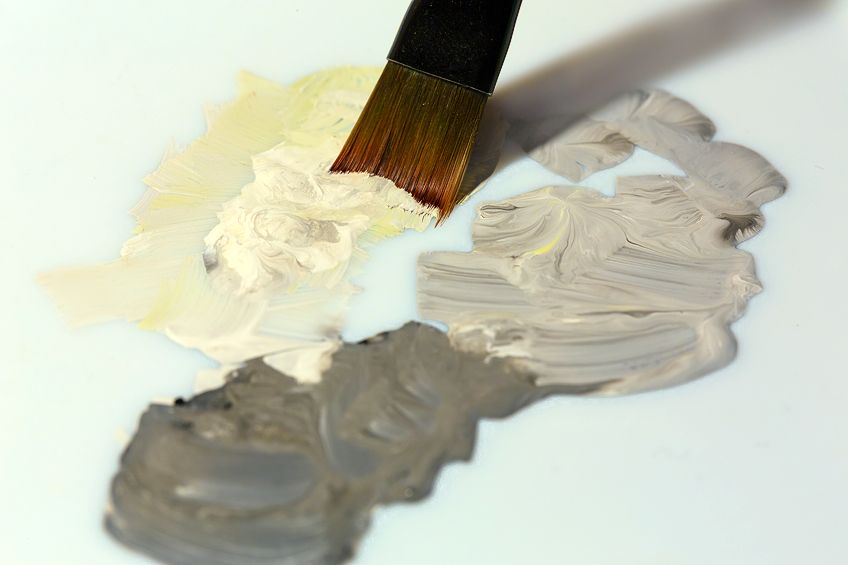
Why Is Color Bias So Important?
Color bias is not only something interesting to consider, but it has a direct effect on how you mix colors. You are probably aware of the fact that mixing all three primary shades will create a muddy shade of brown. Say we wanted to mix a purple (which is the base for one of our gray mixing methods) and we combined a warm red with a cool blue (that contains a little yellow). The result of this combination would be a muddy purple because we are inadvertently combining all three primary shades.
For a vibrant purple, the best combination would be a cool red and a warm blue, as both already lean towards purple and only contain red and blue hues.
Frequently Asked Questions
How Many Shades of Gray Are There?
Contrary to what Fifty Shades of Gray would have you believe, there are actually endless different gray hues that you can make yourself. Many of these gray shades may not have official names, but there is extensive variety and possibility within the gray spectrum.
What Two Colors Make Gray?
There are several combinations that make gray shades. The most basic color combination to create gray is black and white, but there are many other options. For warmer grays, try combining yellow and purple. You can make cooler gray shades with a combination of orange and blue, or try mixing red and green for another dark cool gray.
In 2005, Charlene completed her Wellness Diplomas in Therapeutic Aromatherapy and Reflexology from the International School of Reflexology and Meridian Therapy. She worked for a company offering corporate wellness programs for a couple of years, before opening up her own therapy practice. It was in 2015 that a friend, who was a digital marketer, asked her to join her company as a content creator, and this is where she found her excitement for writing.
Since joining the content writing world, she has gained a lot of experience over the years writing on a diverse selection of topics, from beauty, health, wellness, travel, and more. Due to various circumstances, she had to close her therapy practice and is now a full-time freelance writer. Being a creative person, she could not pass up the opportunity to contribute to the Art in Context team, where is was in her element, writing about a variety of art and craft topics. Contributing articles for over three years now, her knowledge in this area has grown, and she has gotten to explore her creativity and improve her research and writing skills.
Charlene Lewis has been working for artincontext.org since the relaunch in 2020. She is an experienced writer and mainly focuses on the topics of color theory, painting and drawing.
Learn more about Charlene Lewis and the Art in Context Team.
Cite this Article
Charlene, Lewis, “What Colors Make Gray? – 3 Easy Methods and 25 Gray Shades.” Art in Context. July 23, 2021. URL: https://artincontext.org/what-colors-make-gray/
Lewis, C. (2021, 23 July). What Colors Make Gray? – 3 Easy Methods and 25 Gray Shades. Art in Context. https://artincontext.org/what-colors-make-gray/
Lewis, Charlene. “What Colors Make Gray? – 3 Easy Methods and 25 Gray Shades.” Art in Context, July 23, 2021. https://artincontext.org/what-colors-make-gray/.


